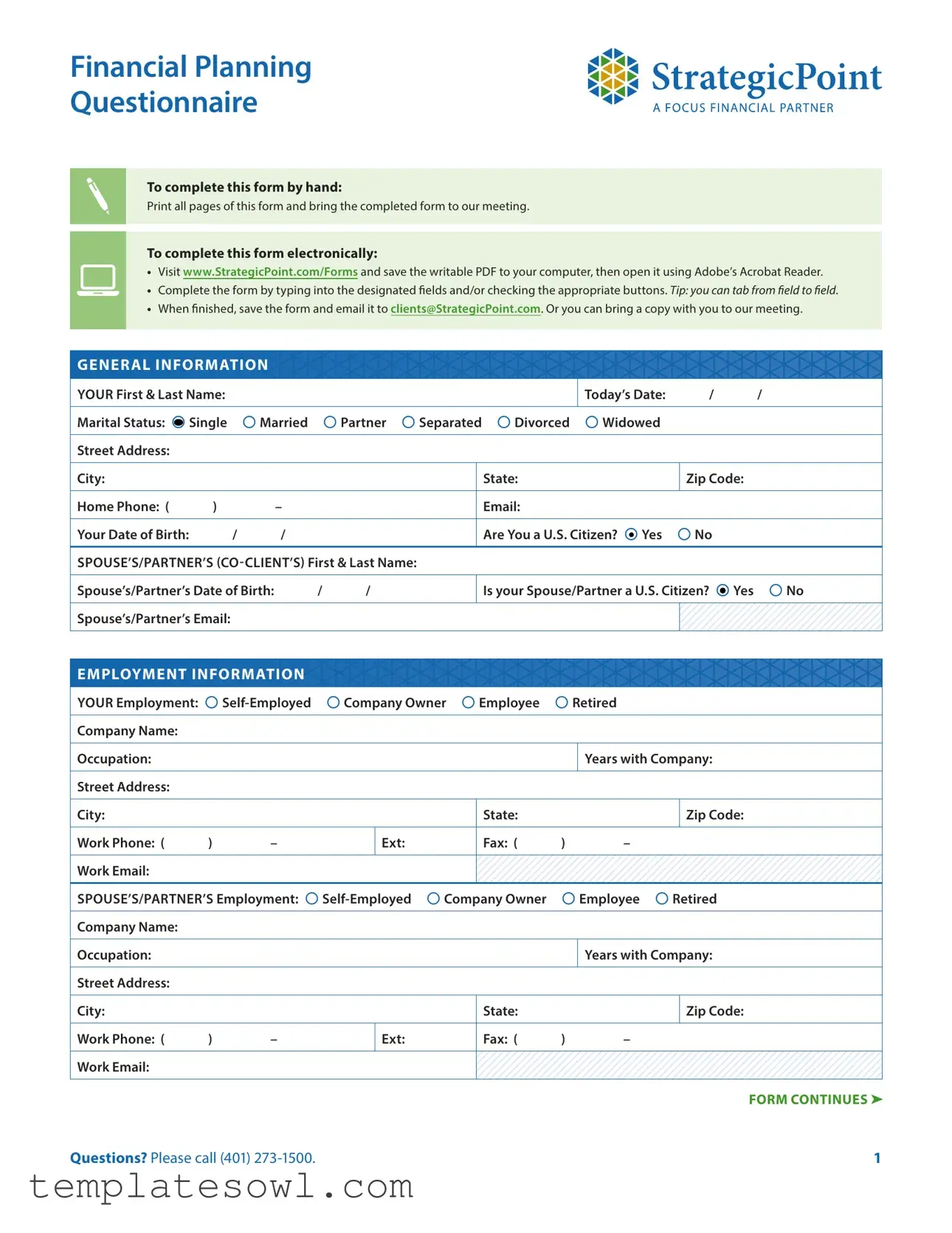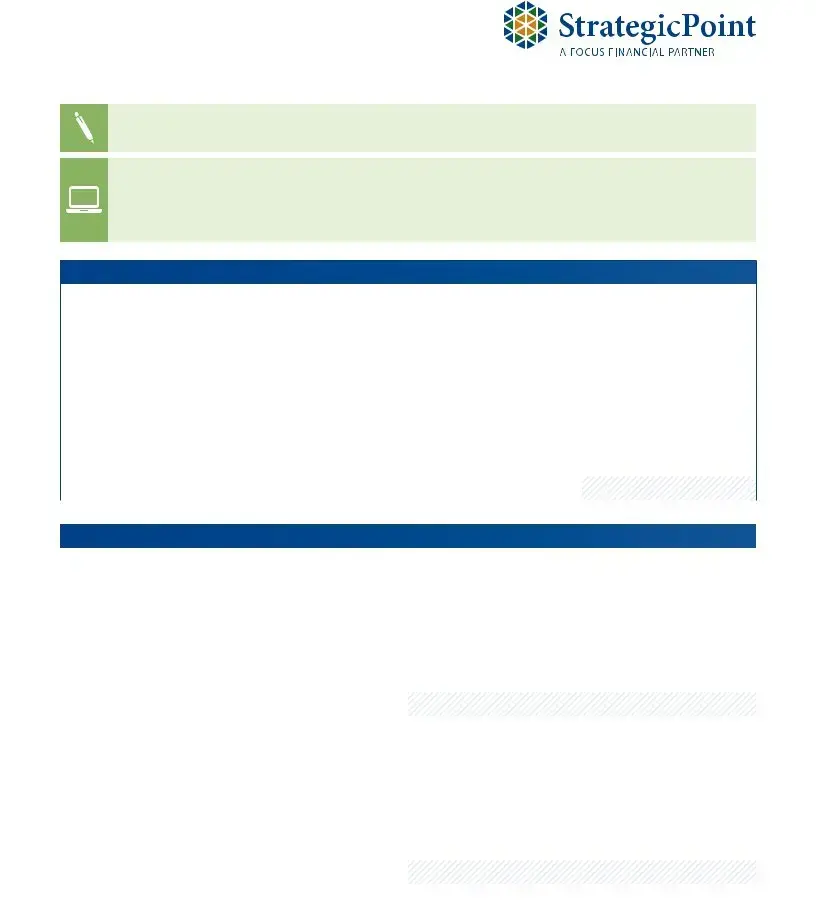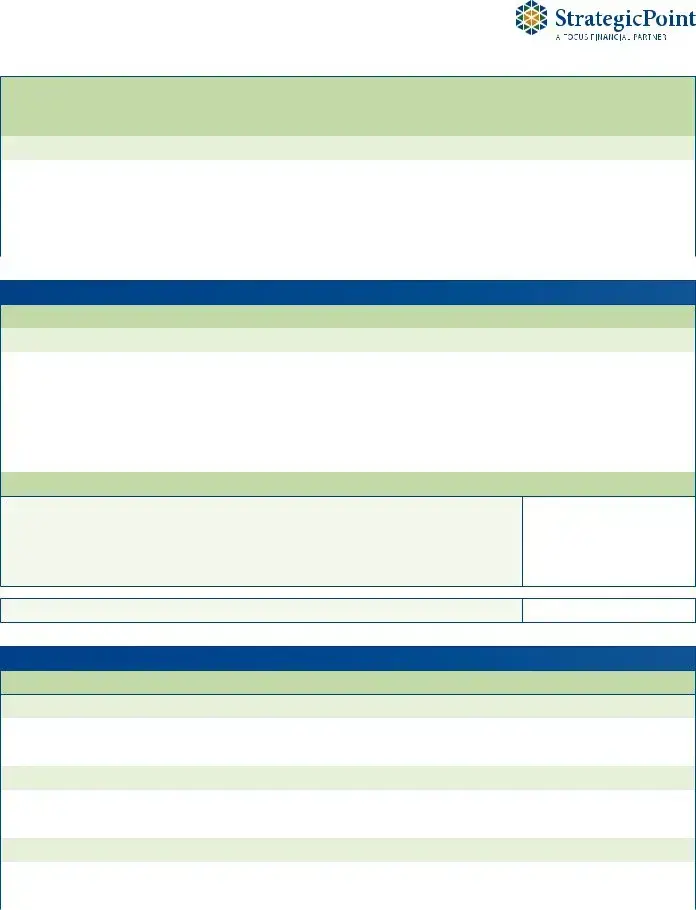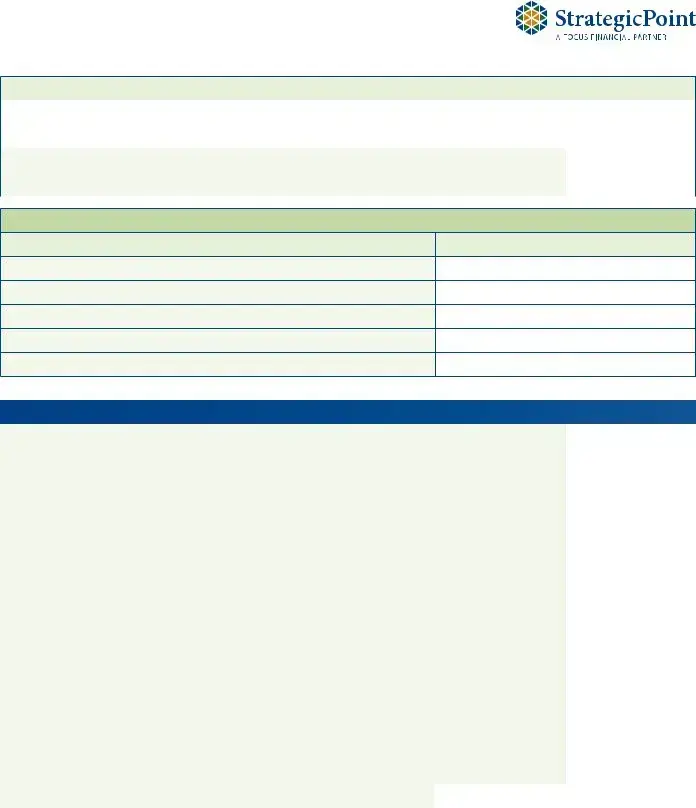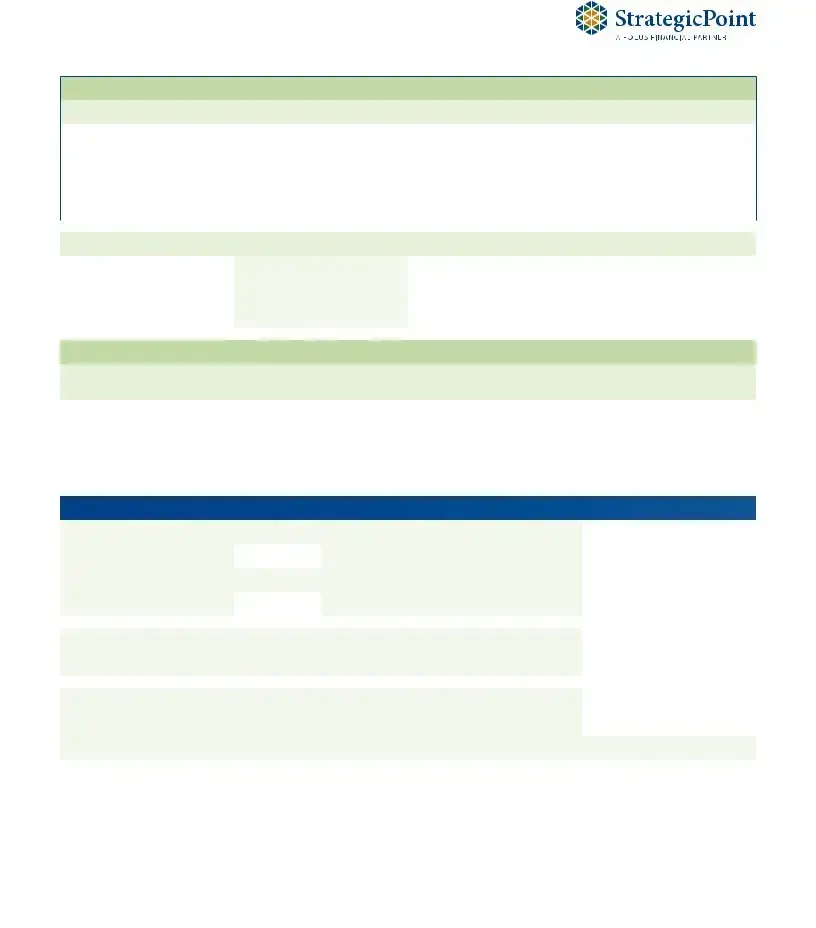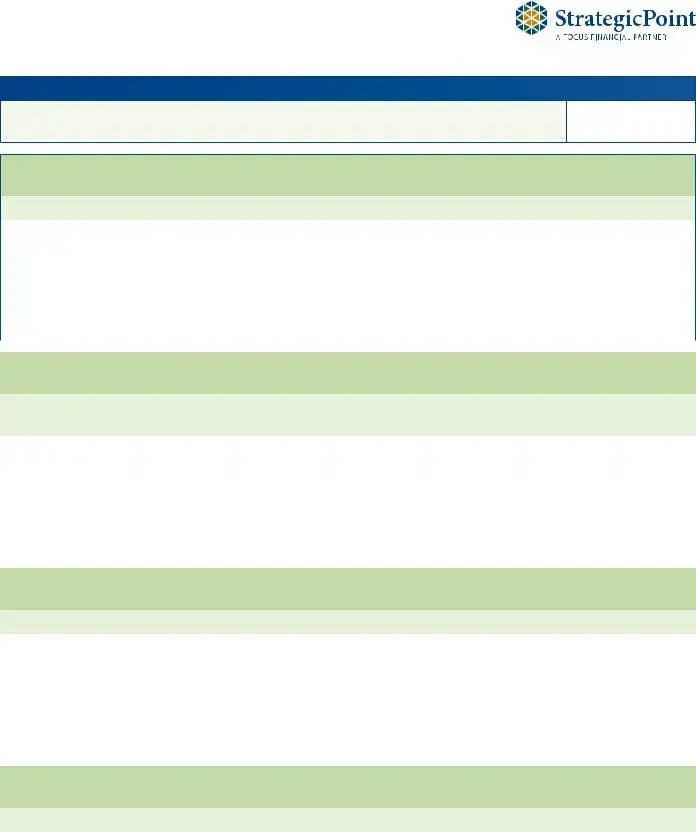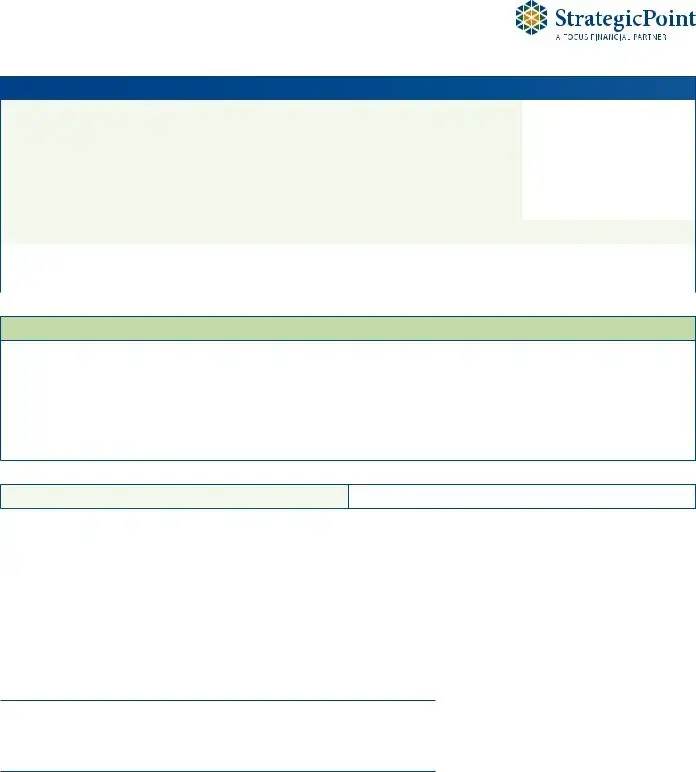What is the Strategic Point Questionnaire form used for?
The Strategic Point Questionnaire is designed to gather comprehensive information about your financial situation. It allows you to provide details on your assets, liabilities, income, and planned future expenses. This information is essential for creating a tailored financial plan that fits your unique needs and goals.
How do I complete the Strategic Point Questionnaire form?
You can complete the form either by hand or electronically. To fill it out by hand, print all pages of the form and bring it to your meeting. If you choose the electronic option, go to www.StrategicPoint.com/Forms. From there, save the writable PDF to your computer. Open it using Adobe Acrobat Reader, fill in the designated fields, and then either email the completed form to clients@StrategicPoint.com or print a copy to bring with you.
What information is required in the General Information section?
In the General Information section, you will need to provide your full name, today's date, marital status, street address, city, state, zip code, home phone number, email address, date of birth, and citizenship status. If applicable, you will also fill out similar details for your spouse or partner.
What types of assets do I need to report?
You'll report various types of assets, including bank accounts, retirement accounts, taxable accounts, business ownership interests, personal property, and real estate. Specific details such as the type of asset, ownership, and current balance are required to provide a full picture of your financial status.
Can I update the form after submission?
If you need to update your information after submitting the form, it is recommended to contact Strategic Point directly at 401-273-1500. They can provide guidance on how to amend your questionnaire and ensure that your most current financial data is used in your planning process.
Is there a deadline for submitting the form?
While there may not be a strict deadline, it is best to submit the form at least a few days before your scheduled meeting. This allows your financial advisor ample time to review your information and prepare for your discussion.
What if I don't know some of the answers?
It is common to feel uncertain about certain aspects of your finances. You can leave those fields blank, and your advisor can help you develop an understanding during your meeting. Providing as much information as possible will aid in more accurate financial planning.
How detailed should I be with my assets and liabilities?
Detail is important. Provide specific values and relevant account types when listing your assets and liabilities. Accurate information will help your financial advisor create a financial plan that truly reflects your current situation and future goals.
Can I get help filling out the form?
If you require assistance with completing the form, you should not hesitate to reach out directly to Strategic Point. Their team is available to guide you through the process and answer any questions you may have.
What should I do if I have more assets or liabilities than the form allows for?
If your assets or liabilities exceed the space provided, attach additional sheets as needed. Clearly label any supplementary information so that your advisor can easily integrate it into your financial analysis.
